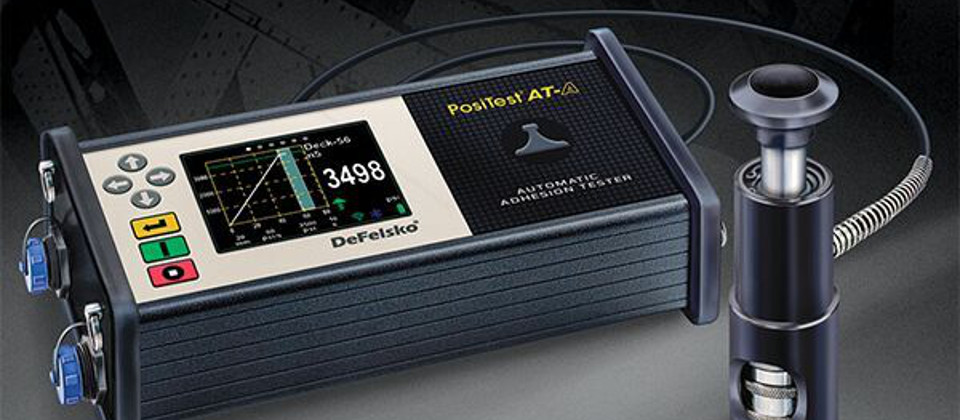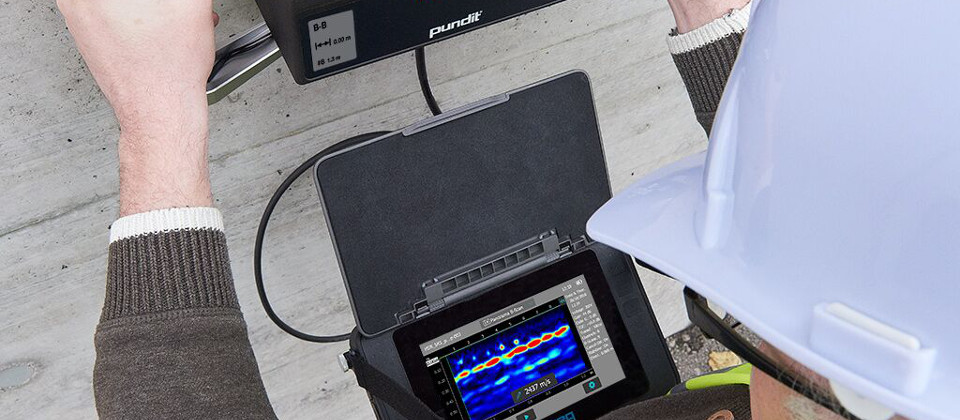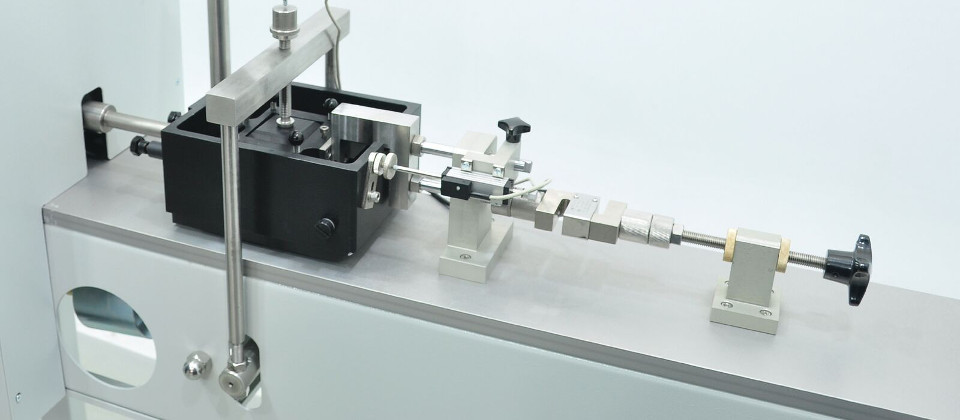Concrete Strength
Testing the strength of concrete in the field may be required for:
- Controlling the construction process
- Making timely construction decisions
- Quality Assurance
- Matching repair materials for the structure
- Condition assessments
- Documenting newly built structure
The actual compressive strength is estimated by correlating destructive tests from the lab with other materials properties such as surface hardness (Rebound Hammer Testing) or ultrasonic wave velocity (UPV or UPE).
Silver Schmidt Live Hammer
 The Silver Schmidt Live Hammer is a digital rebound hammer used to evaluate concrete strength and uniformity. Schmidt Hammer testing is a non-destructive testing (NDT) method commonly used on existing concrete buildings for structural assessment, to reduce coring and damages on the buildings.
The Silver Schmidt Live Hammer is a digital rebound hammer used to evaluate concrete strength and uniformity. Schmidt Hammer testing is a non-destructive testing (NDT) method commonly used on existing concrete buildings for structural assessment, to reduce coring and damages on the buildings.
In contrast to an Original Schmidt "R" measurements, the Silver Schmidt "Q" mechanism measures impact velocity, which is independent of impact direction (angle), gravity and internal friction.
The combination of datalogging and Q measurements provides more accurate and quicker measurement. Schmidt Hammer testing can be applied on hardened concrete (ASTM C805) for condition assessment and in-situ strength of precast concrete (EN 13791) for quality assurance. Schmidt Hammer results help structural engineers to understand the condition of the structures, so they can plan for any maintenance or remedial work. In-situ and early age strength measurement provide useful information to precast and cast-in-place workers on when to remove the formwork.
The digital functions in the hammer help you save time and resources, fast record keeping with the ability to log notes and pictures during measurement to promote effective workflow and share results with your team or clients.
Silver Schmidt Live Hammer a simple and effective NDT method for concrete strength testing on concrete structures and precast concrete.
Further Details and Specifications
Pundit PL-200 UPV
 Proceq's Pundit PL-200 is an ultrasonic pulse velocity (UPV) testing system used to evaluate material properties and condition of concrete. This includes strength of concrete, presence of defects or voids and crack depth measurement.
Proceq's Pundit PL-200 is an ultrasonic pulse velocity (UPV) testing system used to evaluate material properties and condition of concrete. This includes strength of concrete, presence of defects or voids and crack depth measurement.
Ultrasonic Pulse Velocity (UPV) is a non-destructive testing (NDT) method that measures the time of flight for ultrasonic wave pulsed by one transducer into a medium and received by another transducer.
Pundit PL-200's UPV method can be combined with Schmidt Hammer testing in a technique known as SONREB method, that provides more comprehensive results to engineers and asset owners on the strength of concrete structures.
Pundit PL-200 also has the capability to add different frequency transducers for different medium and geometry.
Most importantly, Pundit PL-200 UPV allows user to take measurement within seconds, while not damaging the concrete structures under inspection. This provides useful information to engineers instantly onsite and enable them to assess its conditions.
Pundit PL-200 is a simple and effective NDT method for material properties and strength evaluation on concrete structures and buildings.
Further Details and Specifications
INSITE
 RPX INSITE is a temperature monitoring sensor used to monitor the temperature of large concrete pours and to estimate the strength of in-place concrete using the concrete maturity method, that is based on time-temperature and strength relationship. This is a proven method for early age strength estimation for in-place concrete (ASTM C1074).
RPX INSITE is a temperature monitoring sensor used to monitor the temperature of large concrete pours and to estimate the strength of in-place concrete using the concrete maturity method, that is based on time-temperature and strength relationship. This is a proven method for early age strength estimation for in-place concrete (ASTM C1074).
The temperature readings from INSITE loggers provide useful information on timing to engineers on the in-place concrete strength, to determine when the best time to remove formwork, when to stress the concrete structures such as post tension cables, and when to reshore the concrete slab. Most importantly, protect the in-place concrete curing under extreme cold and warm weather.
A self-starting INSITE logger start taking measurements automatically, as soon as concrete is poured. All data is stored in the logger itself and may be transferred and saved in the cloud as soon as a Wireless Remote station is connected to the INSITE logger.
INSITE temperature monitoring offer significant benefits to the contractor as time is critical for project to stay on schedule or get ahead of the game.
Further Details and Specifications









